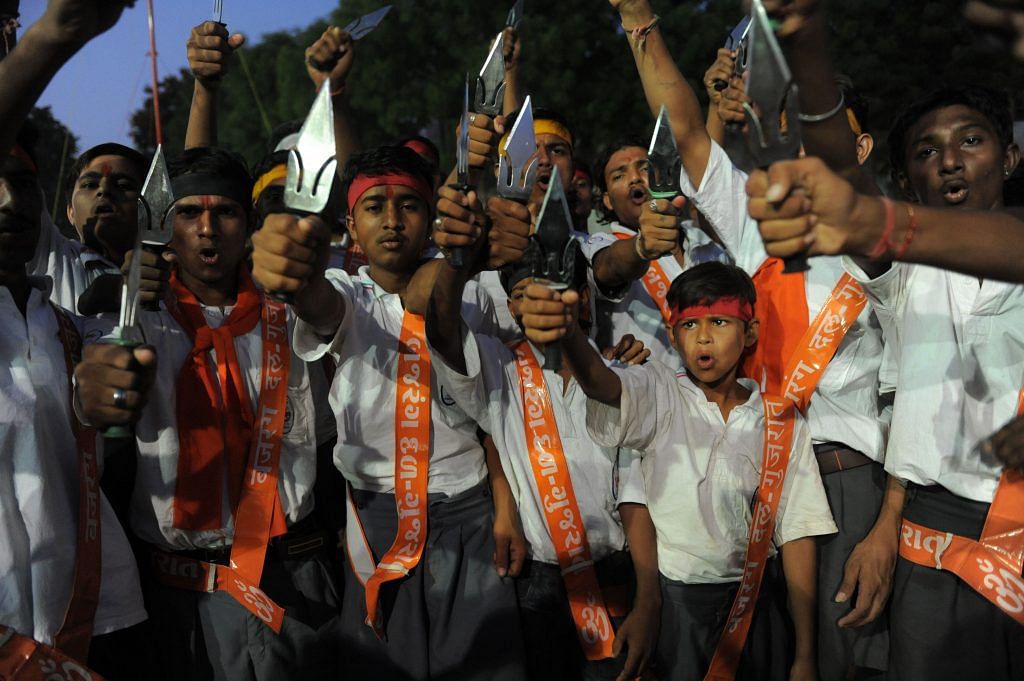It is futile for liberals to look for political space in this middle class – Gandhi and Nehru are, for them, just names from a lost world.
Everything appears normal in India. City editions of all newspapers run daily colour supplements with movie gossip, photos of celebrity parties and comic strips. Restaurants in Delhi’s Khan Market, Mumbai’s Pali Hill or Bengaluru’s Lavelle Road, serving European and Chinese or Japanese cuisine, are brimming with guests.
Looking at the mood, it seems that the heated debates on Assam’s National Register of Citizens (NRC) or mob lynching or rapes are taking place on some distant continent.
The spectre of anarchy, it would appear, is a bizarre illusion for those who love Prime Minister Narendra Modi. After all, the so-called mob violence and communal strife have always been part of India’s life, and journalists critical of Modi are only creating a fear psychosis. Indeed, if these fear-mongers go silent, life would be peaceful.
Also read: Amit Shah & Modi are playing with a fire that doesn’t distinguish between Muslim & Hindu
If one were to see the world through the prism of the Newshour rantings, it would seem that not only India, but the whole world is divided in only two camps—Islamist and anti-Islamist. The so-called immigration crisis in Europe or US President Donald Trump’s policy of banning influx from some Muslim countries is a global reflection of that divide.
Almost 25 years ago, American sociologist Samuel P. Huntington propounded a thesis that future world conflicts would occur between cultures and not countries. (Foreign Affairs, 1993). According to him, the biggest threat to world peace would be from the global Islamic civilisation, with violent extremism as its arm. His thesis was titled The Clash of Civilizations?.
It is a rather intriguing coincidence that he argued his thesis soon after the collapse of the Soviet Union and end of the Cold War (December 1991). From the ‘50s to the early ‘90s, the world was believed to have been divided between the Communist and democratic countries. “Those who are not with us are against us” was the simplistic American worldview. This view had considerable influence on the intellectual establishment in India. Places like the India International Centre (IIC) in Delhi were seen at that time as a product of that cultural Cold War.
India proved to be the most fertile ground for Huntington’s thesis. Babri Masjid was demolished by Hindutva fanatics on 6 December 1992. Even the leading lights of the intellectual establishment like Girilal Jain, former editor of The Times of India, said in his book The Hindu Phenomenon that the demolition was “essentially beneficent”, and Muslims would feel safer in a Hindu Rashtra.
Otherwise mild editors like K.R. Malkani, M.V. Kamath and T.V.R. Shenoy echoed Jain’s views. The Rath Yatra of L.K. Advani was actually following the path shown by Huntington, even if unknowingly.
Since then, the communal divide has seeped through the Hindu middle class consciousness. The “ifs” and “buts” of history can be interesting and illuminating. If the Atal Bihari Vajpayee-led BJP had come back to power in 2004 (with subservient NDA partners), the Hindu consolidation that we are seeing now would have perhaps started at that time.
Also read: Political debate must remain in the frame of Hindutva. Tharoor is just an excuse
Let us not ignore the fact that the seat difference between Sonia Gandhi-led Congress and Vajpayee-led BJP was just seven in 2004 elections (Congress 145 and BJP 138). Sonia’s formation of a pre-poll alliance with “secular” parties saved the Congress. The buzz in the Sangh Parivar at that time was that Vajpayee would vacate the seat for Advani in the middle of the tenure and would be made the President in 2007.
All this sounds almost fictional today. But in those days, Advani was no less a Hindutva radical. The famous debate of “Mukhota and Chehera” dominated drawing room discussions at that time. The liberal “Mukhota” of Vajpayee will be replaced by the real “Chehera” of Advani, it was said. After all, was it not Advani who vociferously defended Modi after Godhra enveloped Gujarat?
Today, Advani may even appear as a liberal face to many Modi detractors, but back then his was the “Trishul” carrying image in R.K. Laxman’s cartoon. If Modi can ride roughshod over his patron and protector today, it is because the real “Chehera” has taken over the system. The RSS has its “Chehera” in command now and the so-called liberal “Mukhota” is lying in a state of semi-coma.
The reason why the Left is left out today and liberals are trying to save their political space is because they did not realise in time that the terms of political discourse had changed. The middle class, which was the flag bearer of liberal-secular values, had metamorphosed.
Also read: Nehru is the greatest PM India has had, Vajpayee an economic failure and Rao the worst
One layer of the middle class had become hedonist-consumerist, aspiring an American lifestyle, and the other layer was trying to find its identity in neo-Hindutva. The NRIs who were finding themselves rootless in the US or in the Gulf countries embraced Advani first and Modi later.
Those spending their evenings in high-end restaurants belonged to the former, the hedonist upper middle class. In their indifference to the lynching and anarchy outside, the other layer of middle class became apologists for neo-Hindutva. It is futile for liberals to look for political space in this class – Mahatma Gandhiji and Jawaharlal Nehru are, for them, just names from a lost world.
Kumar Ketkar is a former editor and Congress member of Rajya Sabha.
